NEWS
New Buddhist Shrine in Hebei Emphasizes Harmony Between Humanity and Nature
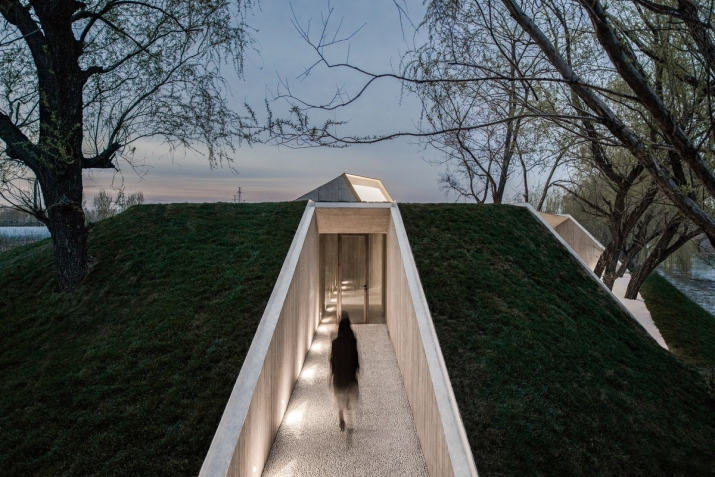 Entrance to the shrine. From dezeen.com
Entrance to the shrine. From dezeen.comA newly built Buddhist shrine in the city of Tangshan in China’s Hebei Province uses modern architecture and a combination of concrete and natural materials to merge the building with its surroundings. Built inside a hill and hardly visible from the outside, the shrine evokes a sense of calm and serenity.
Completed in the first half of 2017, the shrine was designed by the Beijing-based firm Arch Studio (founded in 2010 by Han Wenqiang) and draws upon the Buddhist idea that humans and nature need to co-exist in harmony: “Zen stresses on complying with nature and being part of nature,” Arch Studio explained. “That is also the goal of the design for this space—making use of space, structure, and material to stimulate human perception, thus helping man and building to find the charm of nature even in an ordinary rural landscape, and to coexist with nature.” (Dezeen)
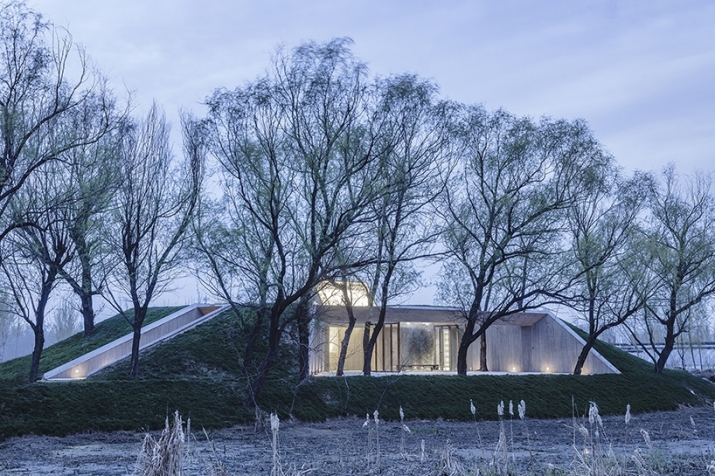 The outside of the shrine. From designboom.com
The outside of the shrine. From designboom.com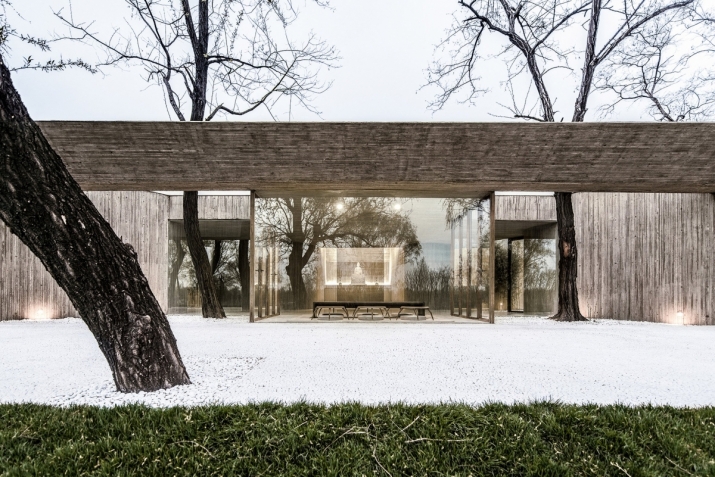 A view of the tea room behind the statue of the Buddha. From designboom.com
A view of the tea room behind the statue of the Buddha. From designboom.comInformally referred to by the architects as “Buddha Tea House” (Homecrux), the shrine’s purpose and philosophy is reflected in the materials (concrete, wood, and glass) and the design of the building. The structure is embedded in a hill by a river, hardly disrupting the existing landscape. The architects chose to preserve the mature trees already present at the site and build around them. This resulted in five independent but flowing spaces that wind around the trees and branch out from one central room. The spaces have their own functions—entrance, tea room, meditation room, living room, and bathroom—and are interspersed with courtyards featuring the aforementioned trees and bamboo. As one strolls around the shrine, the many glass windows provide tableaux vivants of the river and the surroundings.
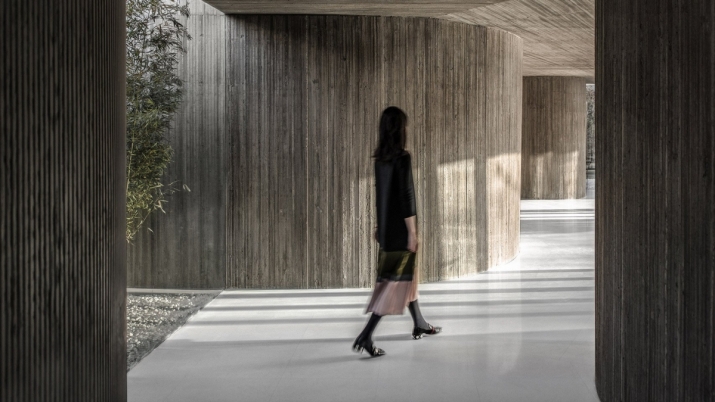 Walking around the structure offers a taste of Chan tranquility. From dezeen.com
Walking around the structure offers a taste of Chan tranquility. From dezeen.com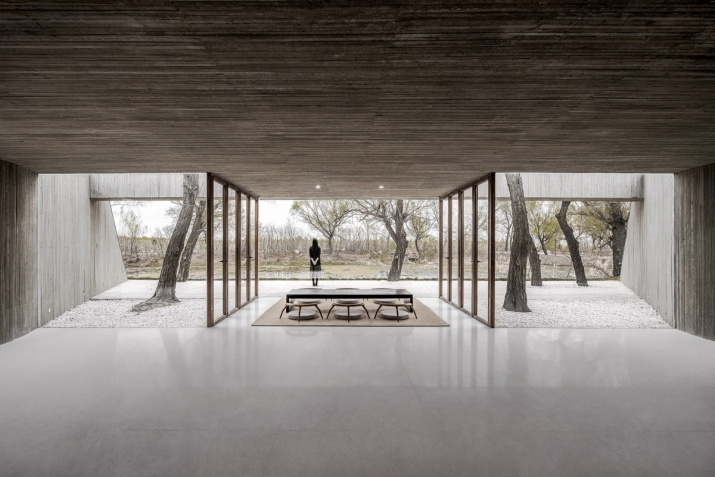 The tea room provides a panoramic view of the river. From dezeen.com
The tea room provides a panoramic view of the river. From dezeen.com“The design started from the connection between the building and nature, and adopts the method of earthing to hide the building under the earth mound while presenting the divine temperament of nature with flowing interior space,” explained the architects. “A place with power of perception where trees, water, Buddha, and human coexist is thus created.” (Dezeen)
The only indication of the existence of the temple on the outside are the geometric concrete shapes that rise above the grass-covered hill that enclose the courtyards, a skylight, and the narrow entrance to the shrine, hidden behind two trees.
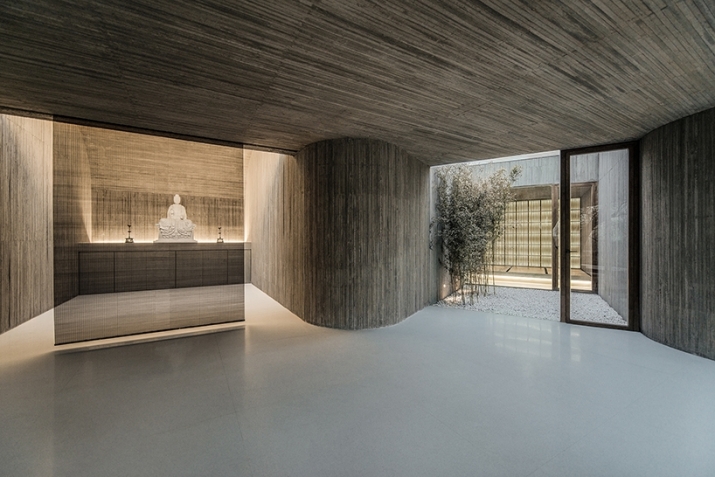 The meditation room with a statue of the Buddha. From designboom.com
The meditation room with a statue of the Buddha. From designboom.com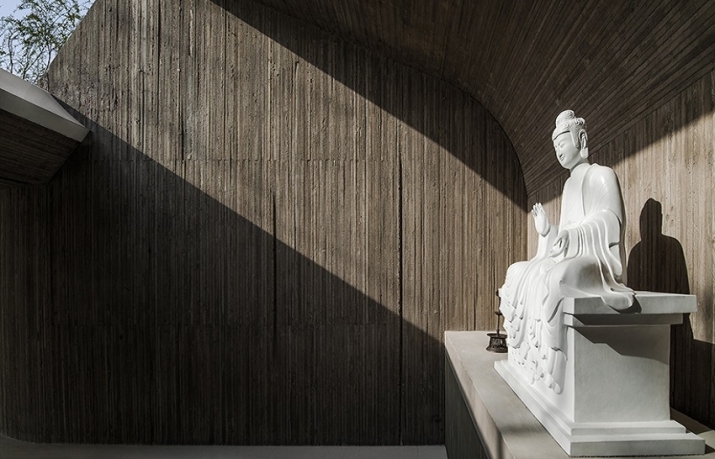 The skylight highlights the Buddha statue. From designboom.com
The skylight highlights the Buddha statue. From designboom.comThe entrance leads one to the tea room, which its panoramic views of the river and the shrine, which is facing the water and has curved concrete walls and a skylight that highlight the statue of the Buddha. The lounge and bathrooms can be accessed by crossing the courtyards that separate them from the central space.
The concrete, wood, and glass used to construct the shrine and the fitted furniture work in harmony to complement and draw in the natural surroundings and the courtyard. Despite the cold concrete, the space feels warm, and walking around the structure truly provides one with a taste of Chan tranquility.
See more:
Arch Studio carves concrete Buddhist shrine into a grassy mound in Hebei (Dezeen)
Looking for spiritual nirvana? Then visit China’s underground Buddhist shrine (Homecrux)
Archstudio embeds buddhist shrine within the riparian landscape of hebei, china (Designboom)
Arch Studio














